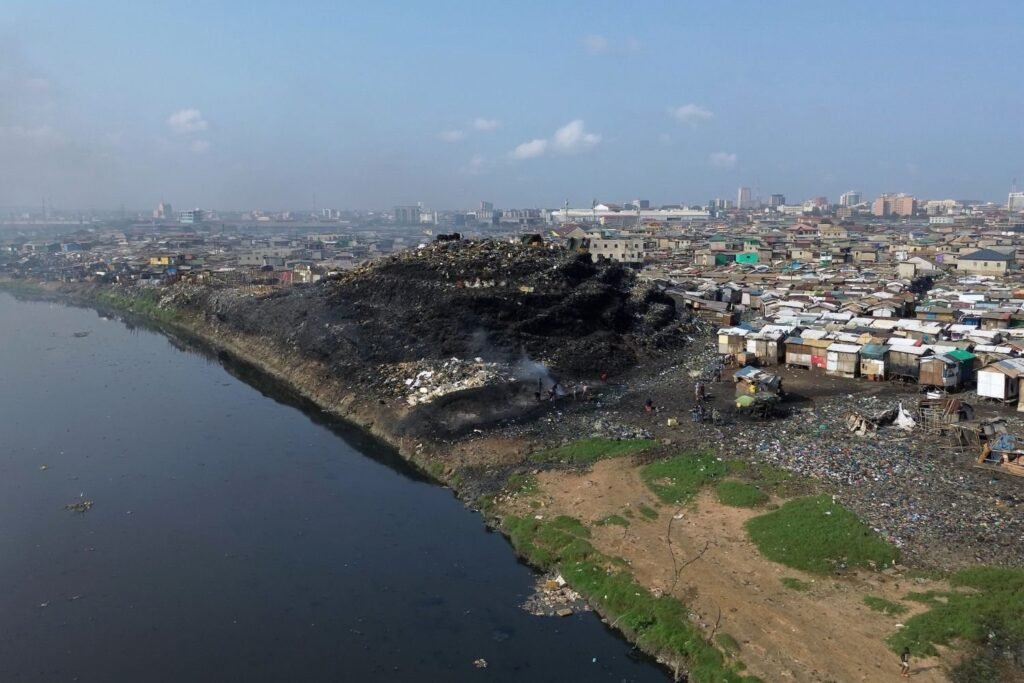The Unnoticed Environmental Threat of Thrifting: A Silent Disaster jeopardizing Wetlands.

In the heart of West Africa, one of the most important wetlands on the continent is being invaded by mountains of used clothing. What started as an apparent solution to reuse textiles has triggered a crisis. A recent investigation exposes how major fashion brands are shifting their pollution to vulnerable territories without taking responsibility.
### A natural paradise turned into a landfill
The Densu Delta, a protected Ramsar area near Accra, Ghana, has been invaded by tons of discarded clothing from the fashion industry. Recognized brands like Marks & Spencer, George at Asda, and Next are among those responsible for the problem. Garments from H&M, Primark, and Zara also pile up on riverbanks and within nature reserves.

These textiles, far from representing aid or fair trade, end up in illegal landfills without treatment or control, directly impacting the environment. Instead of being reused, many garments are trash upon arrival: roughly 40% have no utility or commercial value.
### Ghana, the invisible fashion landfill
In 2024, the UK exported over 57,000 tons of textile waste to Ghana, a historic record. Around 15 million used garments arrive in Ghana weekly, mostly from northern hemisphere countries that choose to export their problem rather than solve it internally.
The Kpone landfill, funded by the World Bank in 2013 and planned to last ten years, collapsed in five. Accumulated synthetic fibers caused a fire that lasted eight months. Since then, spontaneous dumps emerged, even within ecologically protected areas.
### Ecosystems at imminent risk
Three critical accumulation points were identified: two within the wetland and another in the upper river basin. These unprepared and environmentally unprotected spaces endanger habitats of water birds, mangroves, and sea turtles like the olive ridley, leatherback, and green turtle.
Local fishermen report a drastic reduction in fish quantity, nets clogged with clothing, and contaminated water unfit for drinking or irrigation. The environmental impact is strongly felt in the daily lives of communities.
Greenpeace Africa’s analysis determined that close to 90% of these waste materials are made of synthetic materials like polyester and nylon. These fibers release chemicals like PFAS, known for their persistence and harmful effects on human health.
While the situation is critical, there are still viable solutions to prevent it from worsening. Some of the most promising solutions include:
– **Advanced textile recycling:** separating fibers for industrial reuse.
– **Circular economy:** promoting local consumption and repair instead of disposal.
– **Production with clean energy:** reducing environmental impact from the source.
– **Technological traceability:** using blockchain to ensure brands’ responsibility for their products even after sale.
### Going Green in Fashion
**Production with clean energy:** reducing environmental impact from the source.
**Technological traceability:** using blockchain to ensure brands’ accountability for their products even after sale.
### An Urgency that Can’t Wait
The damage caused in the Densu Delta serves as a global alert. The model of excessive consumption and irresponsible production must change. The responsibility lies both with producers and consumers. Buying, disposing, and forgetting can no longer be the norm.
Transforming the textile system into a sustainable one is not just desirable, it is essential. Fashion cannot continue to dress in indifference while wetlands in Africa are dyed with garbage.







